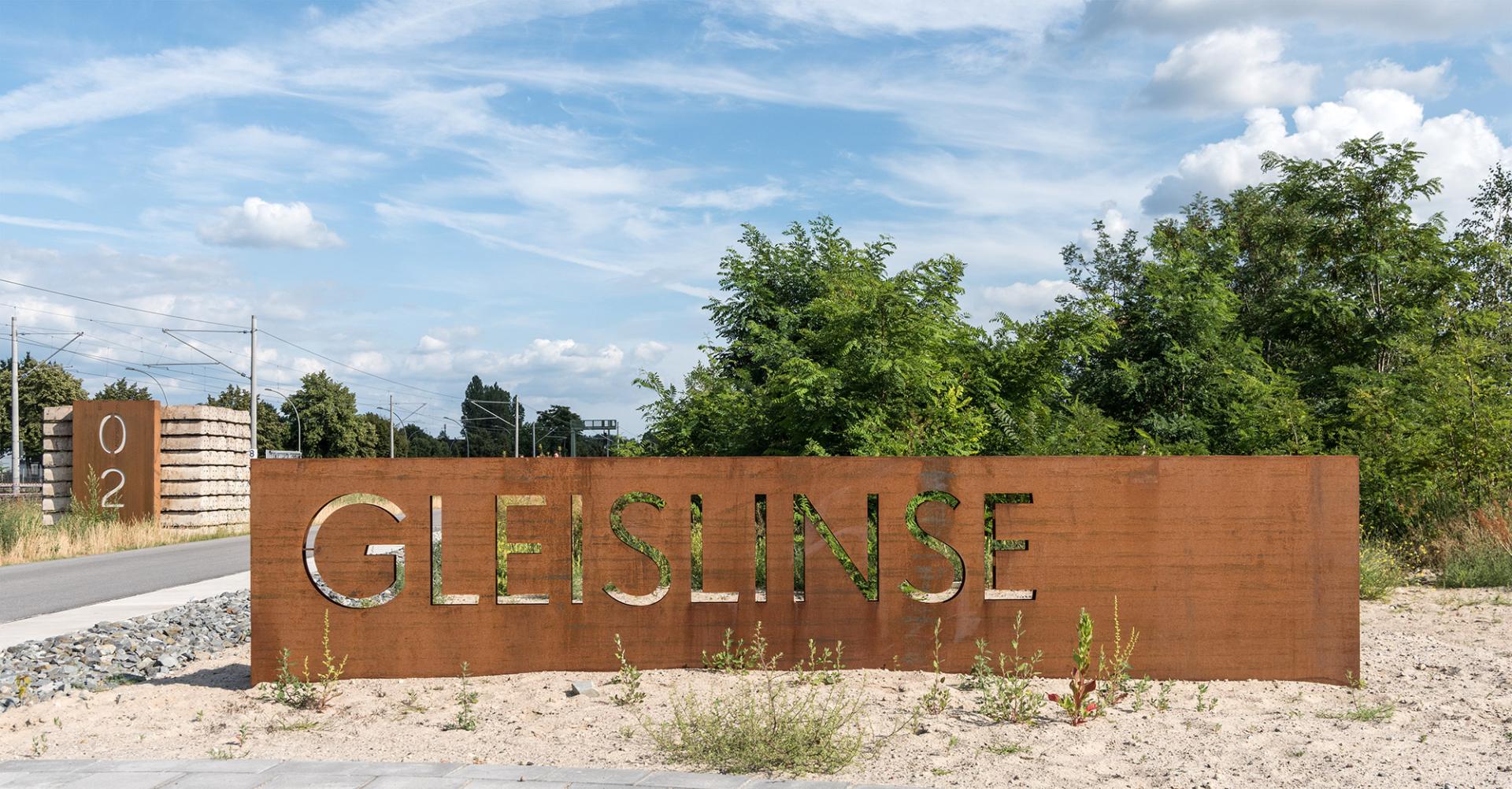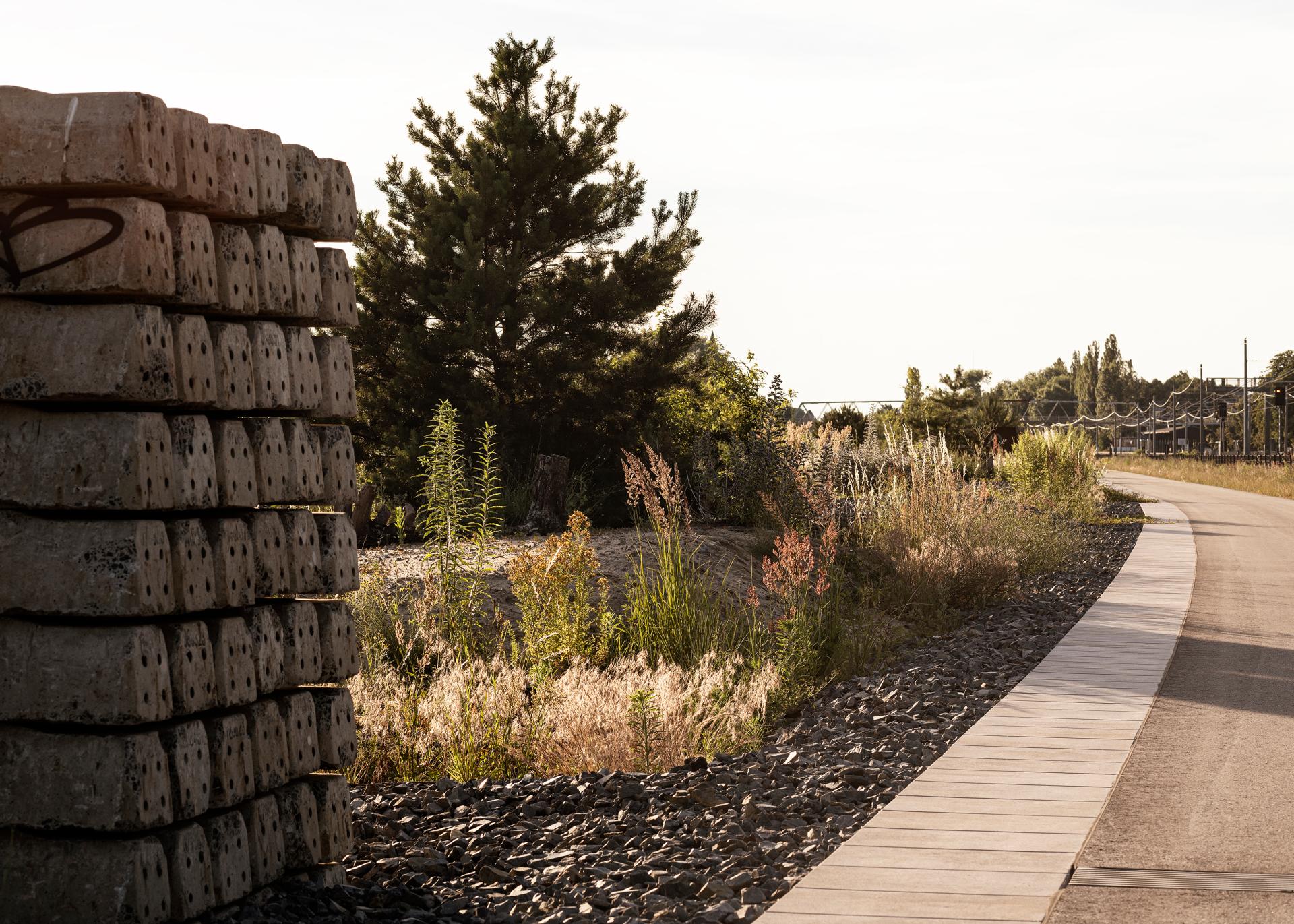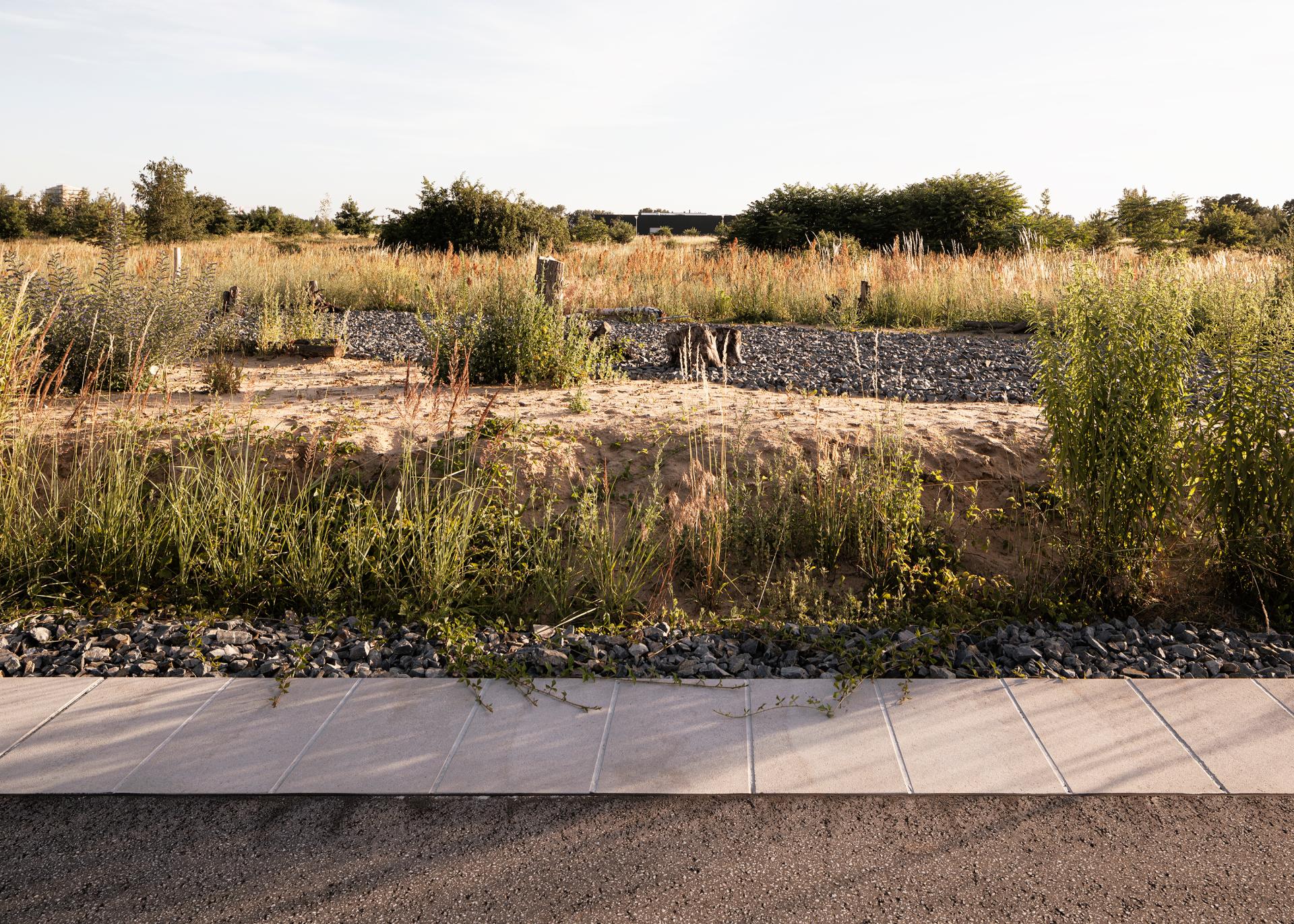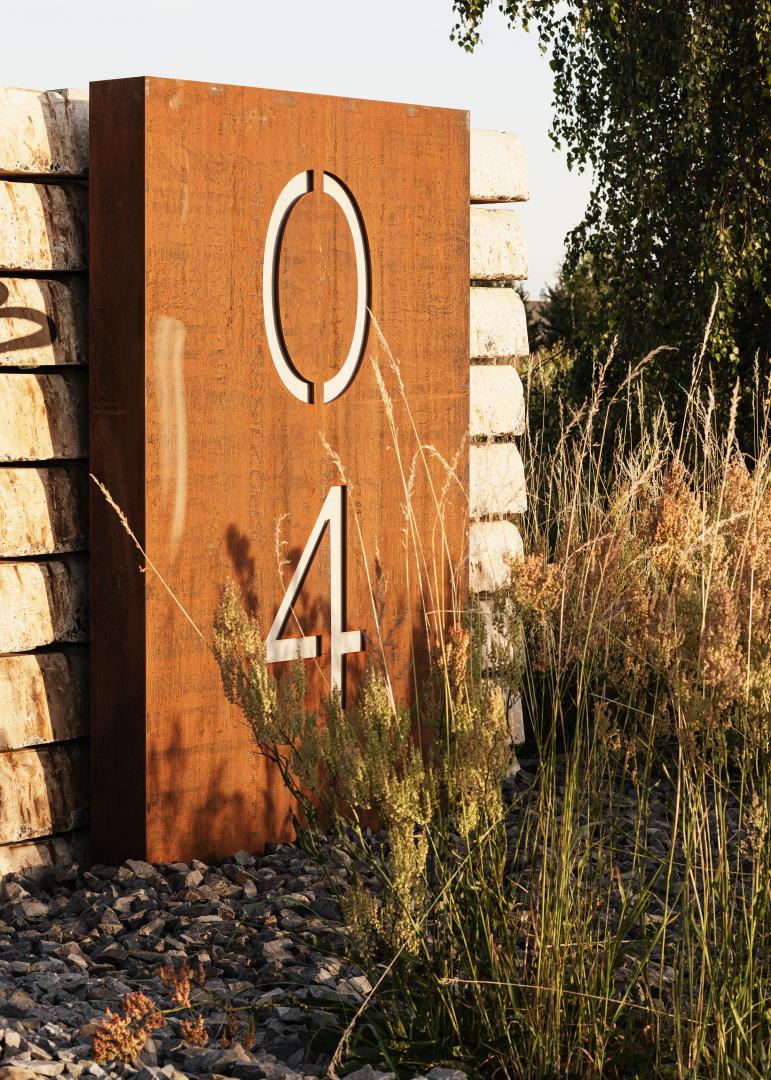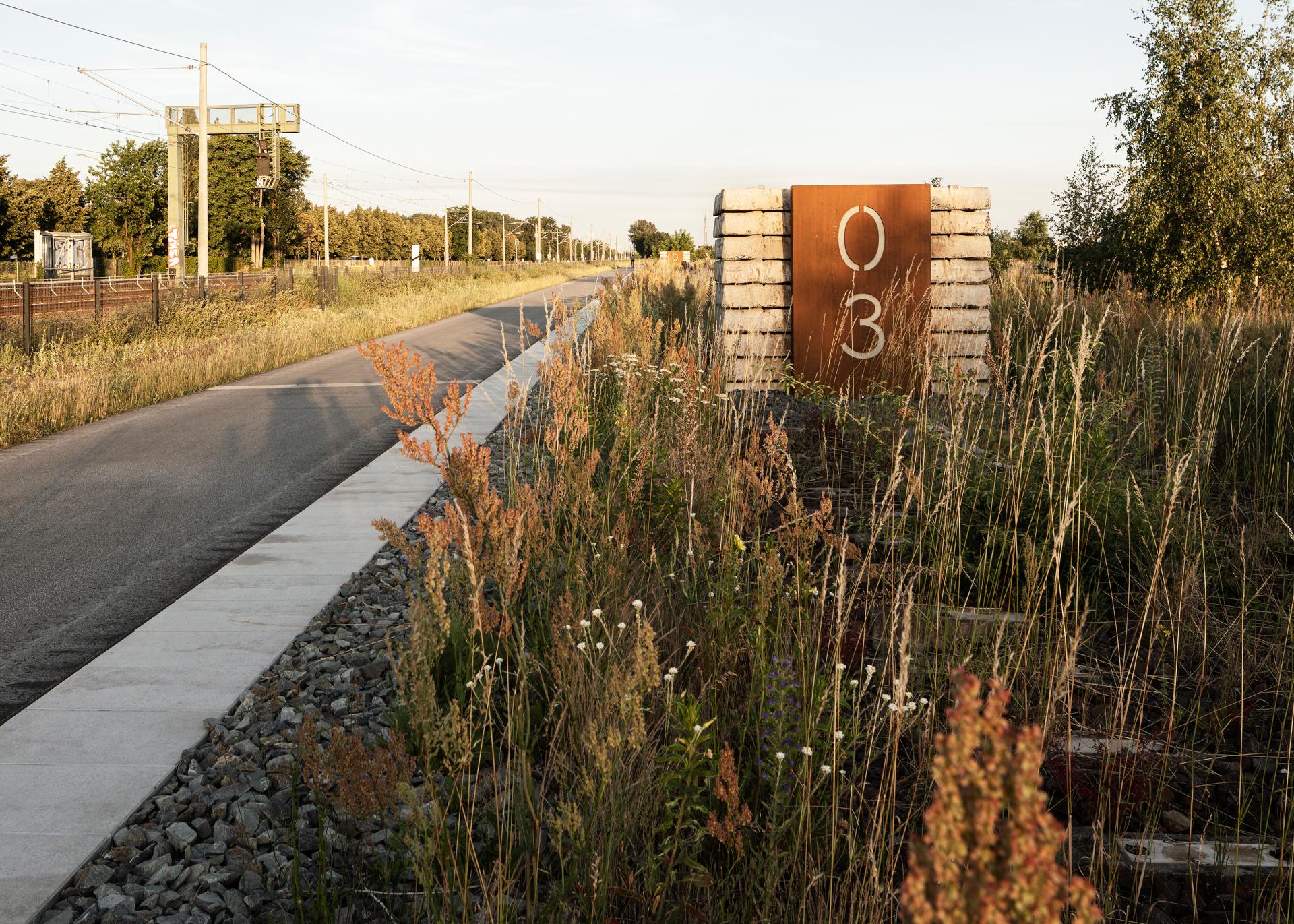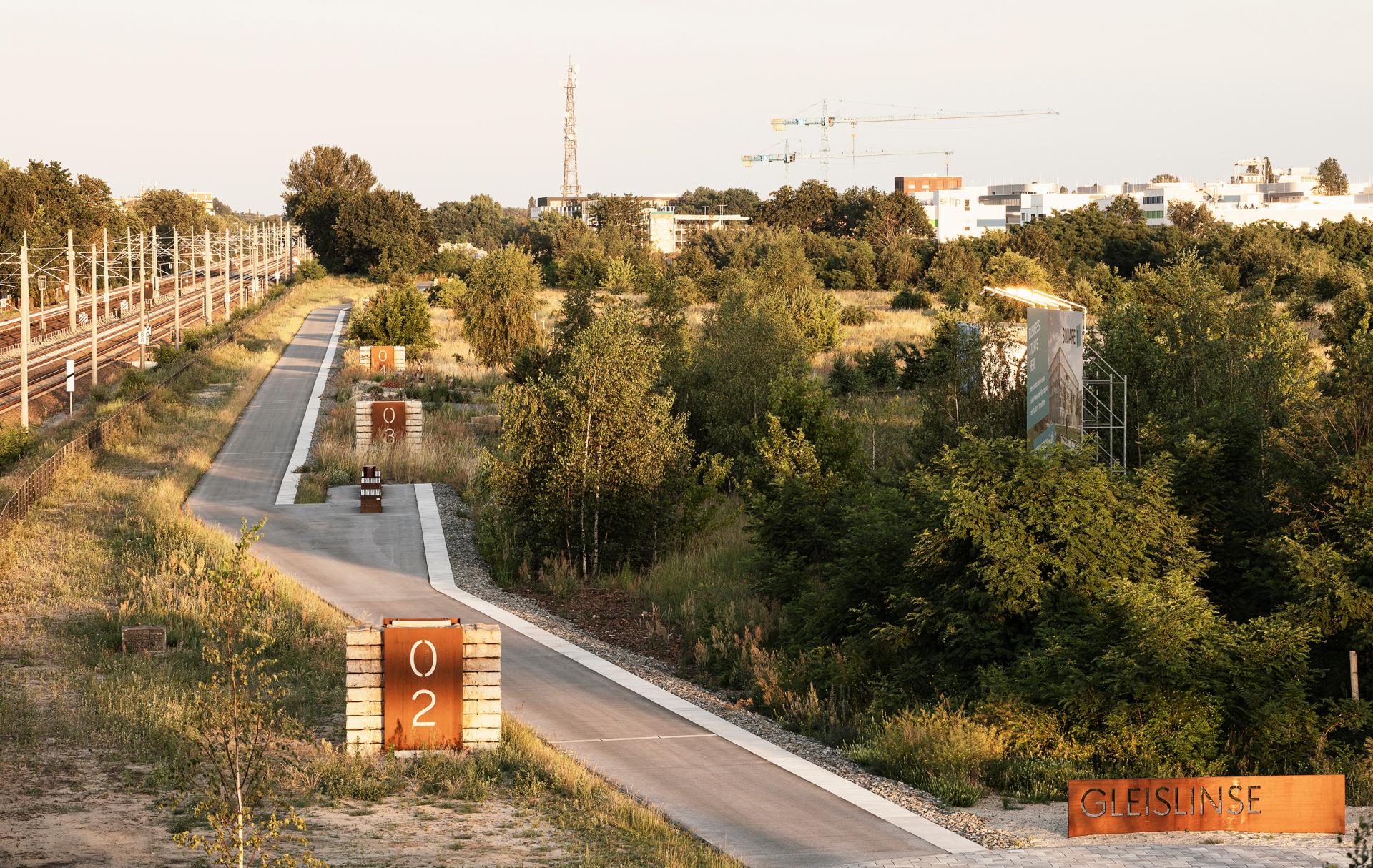Gleislinse
Basic information
Project Title
Full project title
Category
Project Description
The transformation of former railway sites for new uses such as the creation open spaces combining uses and nature conservation is among the current tasks of landscape architecture in today's big cities. The concerns for habitat conservation were pivotal in the design of this green corridor on the edge of the so-called "Gleislinse", as the preservation and integration of existing biotopes for sand lizards or the rare stonecrop were an important part of our concept.
Project Region
EU Programme or fund
Description of the project
Summary
The aim of the new Gleislinse Green Corridor was to transform the former railway into a new open space where human recreation arises alongside an established urban habitat. The Gleislinse Green Corridor is flanked by an active railway and the former railway shunting yard, this yard being yet to be developed into a new commercial area. The approximately 800-meter long green corridor connects the nearby parks in Johannisthal and Köllnische Heide. The concerns for habitat conservation were pivotal in the design of this green corridor on the edge of the so-called "Gleislinse", as the preservation and integration of existing biotopes for sand lizards or the rare stonecrop were an important part of our concept.
Hence, the design is based on existing track and vegetation structures. The path is the structuring element of this green corridor, which is an important segment of the main pedestrian and biking route between the Schöneweide and Adlershof train stations as well as the Johannisthal Landscape Park and Köllnische Heide.
A wide band of slabs runs along this new trail to emphasize the axiality. On both sides are dry grassland sites worthy of special protection and valuable habitat areas for the sand lizard, which uses the ballast of the former track areas as a home territory. The remains of the former use were not only preserved, but also integrated into the design: Stacked concrete sleepers serve as rhythmizing, structuring landmarks as well as new habitat for native fauna. As a reference to the past railroad history, so-called hectometer signs were attached to these sleeper blocks at intervals of 100 meters. Along the trail the visitors may read on the information boards about the site history and the on-site ecological diversity.
Key objectives for sustainability
In the design of the green corridor on the edge of the so-called "Gleislinse", a special consideration was given to nature and species conservation. The preservation and integration of existing biotopes for sand lizards or the rare stonecrop were an important part of our concept.
Key objectives for aesthetics and quality
Our spatial-functional design was based on the existing structures. The path is the structuring element of this green corridor, which is an important segment of the main pedestrian and biking route between the Schöneweide and Adlershof train stations as well as the Johannisthal Landscape Park and Köllnische Heide.
The course of the tracks of the former railway shunting yard with its special structure of track sleepers, gravel and ballast surfaces characterize the vegetation development. The design approach consists in the insertion of a path, that blends in the existing structures of gravel surfaces, railroad relics and vegetation. The path is built slightly raised, in addition to the advantage of reducing excavation, this creates a spatial boundary to the biotope structures. A verge reduces trespassing on the biotopes and provides hiding places for lizards. Squares are placed next to the old tracks. Located at the transition between tall herbaceous vegetation and dry grassland, they mark a change in vegetation and protect the dry grassland areas from being stepped on. Information boards are intended to raise awareness to visitors and cyclists for the sand lizard population or the dry grassland groupings.
Key objectives for inclusion
Results in relation to category
A gray band of slabs runs along the new, asphalted pedestrian and biking path to emphasize the axiality. On both sides are dry grassland sites worthy of special protection and valuable habitat areas for the sand lizard, which uses the ballast of the former track areas as a home territory. We have not only preserved the remains of the former use, but also integrated them into the design: Stacked concrete sleepers serve as rhythmizing, structuring landmarks as well as a new habitat for native fauna. We have attached the hectometer signs to these sleeper blocks at intervals of one hundred meters as a reference to past railroad history.
Along the trail the visitors may read on the information boards about the site history and the on-site ecological diversity. The new connection from northwest to southeast will be linked at its southern end by a cross connection to the adjacent Johannisthal Landscape Park.
How Citizens benefit
When planning the new habitats, the formation of the gravel areas or the fauna-friendly path surfaces, we worked closely (this was new for us) with the Siedlung und Landschaft office, which gave us support from a nature conservation perspective. This enabled us to combine our design ideas with the requirements for nature conservation and to implement the planning in the sense of a "Animal Aided Design". The office also developed the maintenance concept for the green corridor. An important project partner was Deutsche Bahn (German Railways), which gave advice to the planning with regard to requirements for rail operations on the adjacent tracks. In close cooperation with the traffic planning department of WISTA.Plan GmbH, the bike path was integrated into the regional bike path network. For the conception of the hectometer we cooperated with the graphic design office Kleinschmidt, who helped us to set the real railroad lettering.
Innovative character
On the one hand, the conservation and integration of very valuable habitats were the most important aspects of the concept throughout the planning. On the other hand, it was possible to integrate a use that does not compete with the ambition for species protection. Another important point was to create for the site an unique scenic quality, therewith the green corridor grows to be a new place of identification, with its high ecological value between the railroad tracks and the industrial area: Relics of the railroad use were preserved and reinterpreted: The hectometers have become a widely perceived landmark, with a high recognition effect. The rail sleeper stacks are also new habitat for native fauna. Planning, clearing and preservation of the dry grassland and ruderal sites was supervised by ecologists. Today, the area enchant with its natural, fragrant planting patterns.

